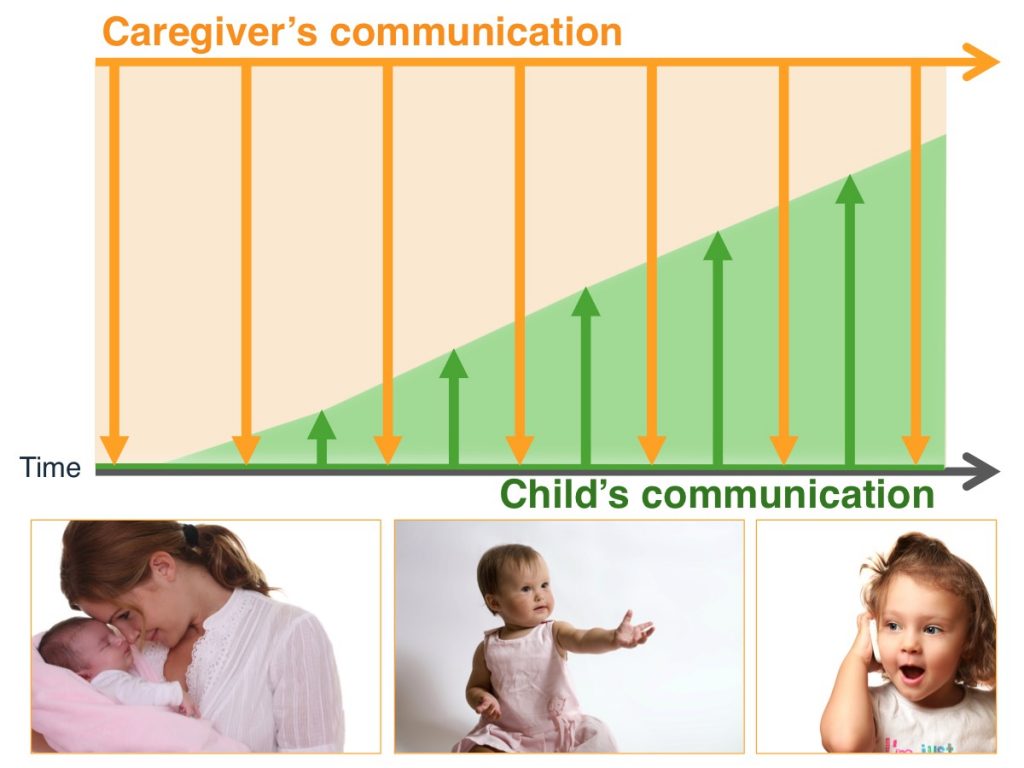
Around 10 months of age, infants begin pointing and gesturing. When an infant points, he often shifts his eye gaze to make eye contact with the listener. It’s as if he is trying to say, “Hey, look at that over there!” Around the same time, infants start to use communicative gestures. Think of an infant stretching her arms toward the caregiver as if to say “pick me up.”
Pointing and gesturing are important because they are symbolic. That is, infants use a symbol (a point or a gesture) to represent an idea (such as “look at this” or “give me that”). This represents an important milestone in language learning. Using a symbol to express a thought is one of the basic elements of language. Like pointing and gesturing, words are symbolic too! For example, the word “spoon” is just a combination of sounds that we make to refer to the curved utensil we use to eat with.
When infants begin to use canonical babbles, points, and gestures, their role in communication with their caregivers begins to change. Think of a newborn baby. In the first few weeks of life, caregivers provide most of the language input. But, over time, children become more active as participants in conversation. Babies use verbal and nonverbal communication in contingent, or back-and-forth exchanges with their caregivers. During an exchange, a child might point to a toy and make a sound. The caregiver can respond by naming the toy or describing it. The infant will likely respond by babbling, pointing, or gesturing to express herself. These types of back-and-forth exchanges are a basic building block of communication. They allow children to practice contributing to conversations. For more information on contingent exchanges, please visit the module “The Importance of Early Interactions.”
By their first birthday, infants are no longer just recipients of language input. They now know how to produce the sounds and syllables of their native language. They are also beginning to understand that they can express their ideas with symbols. Infants learned the basic elements of a conversation through contingent interactions with their caregivers. They are now ready to produce their first words.
-
- Back-and-forth or contingent interactions
- exchanges where a caregiver times her responses to a child’s behavior
- Canonical babbling
- producing the same consonant and vowel over and over, such as dadada
- Infant-directed speech
- a special tone and style of speech used to talk to young children. It’s also called parentese
- Joint attention
- shared attention between social partners to an object or event
- Overextension
- using a word to describe more object categories than it actually represents
- Underextension
- failing to extend a word to other objects in the same category
- Vocabulary spurt
- rapid growth in word learning